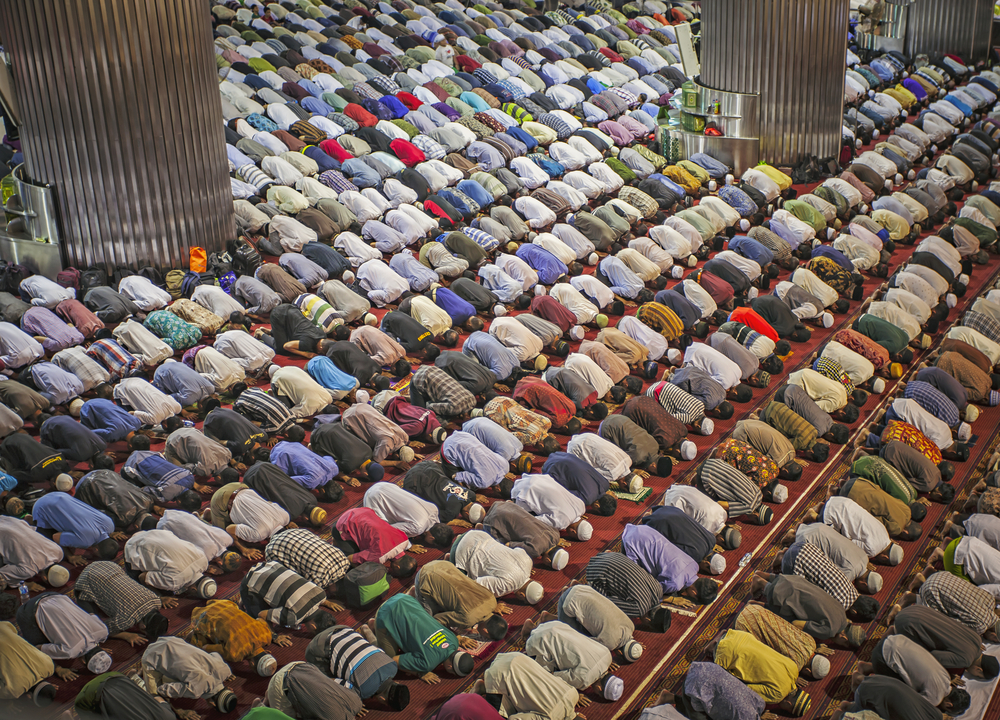Is it Valid to Pray Jumu’a in a School?
Shafi'i Fiqh
Answered by Shaykh Irshaad Sedick
Question
Is a school a valid place to hold the Friday prayers? It’s only accessible to students, and the prayer space is limited. We can’t pray Friday prayer with forty males. Can we take an alternate view on this?
Answer
In the Name of Allah, the Most Merciful and Compassionate. May Allah alleviate our difficulties and guide us to that which is pleasing to Him. Amin.
If the students can go and pray Jumu‘a wherein the general requirements of Jumu’a are met, that would be best. If there is no other option but to pray Jumu‘a at the School, it could work if the conditions below are met, and Allah knows best.
Location of the Jumu’a Prayer
The Friday Jumu’a Prayer must occur at a site, not necessarily a masjid, that is located among people’s dwellings (in a residential zone). Reliable scholars should ideally assess the School’s location to determine the validity of the Jumu’a Prayer therein. [Hamadi, Fath Al-Wahhab Al-Malik]
Minimum Number of Jumu’a Congregants
A valid Friday Prayer, according to the official view of the Shafi‘i School, is a minimum of forty congregants (of those who must pray jumu’a). Alternate views in the Shafi‘i School require four congregants (an Imam and three followers), and the Hanafi School permits three congregants (an imam and two followers). It is permitted for Shafi‘is to adopt an alternative view, especially when there is a need for it, and Allah knows best. [Nawawi, al-Majmu‘]
Should an alternative view (as presented above) be adopted, some scholars recommend that Shafi‘i congregants then pray Dhuhr after their Jumu‘a as a precaution since their Jumu‘a prayer’s validity would be a disputed issue, based on the above views, and Allah knows best. [Ahdal, ‘Umdat Al-Mufti wa Al-Mustafti]
Specific Conditions of the Jumu’a Prayer
In addition to the usual conditions for Prayer, a valid Friday Prayer (jumu‘a) also requires:
- that it be a group prayer;
- that it takes place during the time of noon prayer (zuhr);
- that it follows two sermons (khutba);
- that its site be located among the dwellings of the community;
- that there be a minimum of forty male participants (including the Imam) who have reached puberty, are sane, and are residents, meaning they live there and do not leave except when needed. The minimum, according to Imam Abu Hanifa, is three participants besides the imam [Maydani, Al-Lubab fi Sharh Al-Kitab];
- and that, in places where it is no hardship for everyone to pray at one location, there be no other Friday prayer before or simultaneous with it. [Nawawi, al-Majmu‘]
I pray this is of benefit and that Allah guides us all.
[Shaykh] Irshaad Sedick
Checked and Approved by Shaykh Faraz Rabbani
Shaykh Irshaad Sedick was raised in South Africa in a traditional Muslim family. He graduated from Dar al-Ulum al-Arabiyyah al-Islamiyyah in Strand, Western Cape, under the guidance of the late world-renowned scholar, Shaykh Taha Karaan.
Shaykh Irshaad received Ijaza from many luminaries of the Islamic world, including Shaykh Taha Karaan, Mawlana Yusuf Karaan, and Mawlana Abdul Hafeez Makki, among others.
He is the author of the text “The Musnad of Ahmad ibn Hanbal: A Hujjah or not?” He has served as the Director of the Discover Islam Centre and Al Jeem Foundation. For the last five years till present, he has served as the Khatib of Masjid Ar-Rashideen, Mowbray, Cape Town.
Shaykh Irshaad has thirteen years of teaching experience at some of the leading Islamic institutes in Cape Town). He is currently building an Islamic online learning and media platform called ‘Isnad Academy’ and has completed his Master’s degree in the study of Islam at the University of Johannesburg. He has a keen interest in healthy living and fitness.
